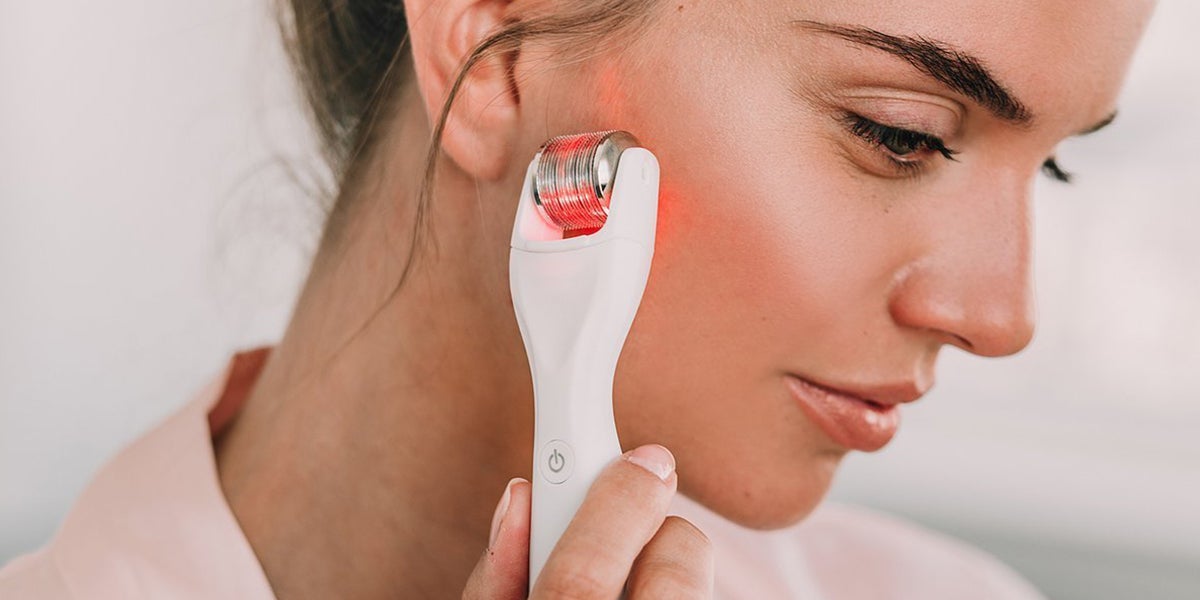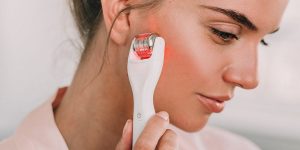By: Jessica Bosco
It’s the multi-tasking beauty treatment that can target everything from blemishes and dull skin to acne scarring, stretch marks and even hair loss—all without going under the knife. Enter: derma-rolling.
On the scene since the mid-’90s, derma-rolling or microneedling has gained serious traction over the last few years (albeit in part thanks to some pretty intense YouTube videos) but also due to major advancements in the technology which means you can now do it yourself at home.
What Is Derma-rolling?
Derma-rolling involves the use of micro-needles which makes microscopic incisions in the skin as “trauma” which then causes the skin to go into “repair mode” by stimulating collagen production. Sounds pretty intense, but it’s actually not as scary as you think.
Following the treatment, the skin’s absorption is amplified which means your products will work even harder for you.
What is a Derma-roller?
A Derma-roller is, you guessed it, the tool used to perform Derma-rolling or microneedling. Once only performed by professionals in a salon, these days there are numerous tools on the market which means you can DIY at home.
Who Should Be Using A Derma-roller?
Derma-rolling is recommended for most skin types however those with highly-sensitive skin or breakouts should avoid the treatment.
“We do not recommend using the roller on highly sensitive skin or broken out skin,” says Dalia Stoddard, Vice President Product Development Rodan + Fields. “This could potentially cause more irritation on an already irritated area.”
What Results Can You Expect From Derma-rolling?
“This tool helps to remove dull, dead skin cells through exfoliation, leaving the surface of the skin smoother and more refined,” says Stoddard. “It maximizes the effectiveness of the products used with it for visibly refined tone, texture and firmness.”
Are all derma-rollers created equal? What should you be looking out for when buying one?
Not all derma-rollers are created equal.
“If you are looking for an exfoliating derma-roller, what is most important is the quality of the tips and the smoothness of the roll over the skin. Our AMP MD has been designed with laser cut tips to ensure quality and precision and has been ergonomically designed to ensure a smooth roll over the skin,” says Stoddard.
Where And How Should You Use A Derma-roller?
For best results, Stoddard recommends using a Derma-roller three times a week at night after applying your toner and then once you’ve tested the product a few times and your skin’s reaction to it, you can increase the frequency to nightly.
“Roll with moderate, comfortable pressure over the entire face and neck with 4-10 passes,” says Stoddard. “For best results, divide the face into sections (forehead, right side, left side, chin, and neck) and treat each section before continuing to the next.
“We recommend following with our Intensive Renewing Serum – take one of the capsules and smooth the serum slowly onto skin. It feels like magic!”
Is Derma-rolling Safe For Pregnant And/Or Breastfeeding Women?
While Derma-rolling is generally considered to be safe for pregnant and breastfeeding women, however hormonal changes in the body during these times can cause skin to be extra sensitive to caution is recommended.
Stoddard says Derma-rolling with the AMP-MD roller is safe for all users however she recommended speaking with your doctor before undergoing any new treatment or using any new products as each pregnancy is unique.
Is There Anything To Know Before Trying Derma-rolling At Home?
Proper storage of your derma-roller is critical to ensure hygiene and prevent bacteria from forming. Most rollers will come with a cap, so ensure this is sealed after each use.
“This is to protect the micro-exfoliating tips from the wear and tear of everyday use,” adds Stoddard.



